Another Nail in College Sports ‘Amateur’ Model Coffin
The NLRB has sided with Dartmouth players on unionization.
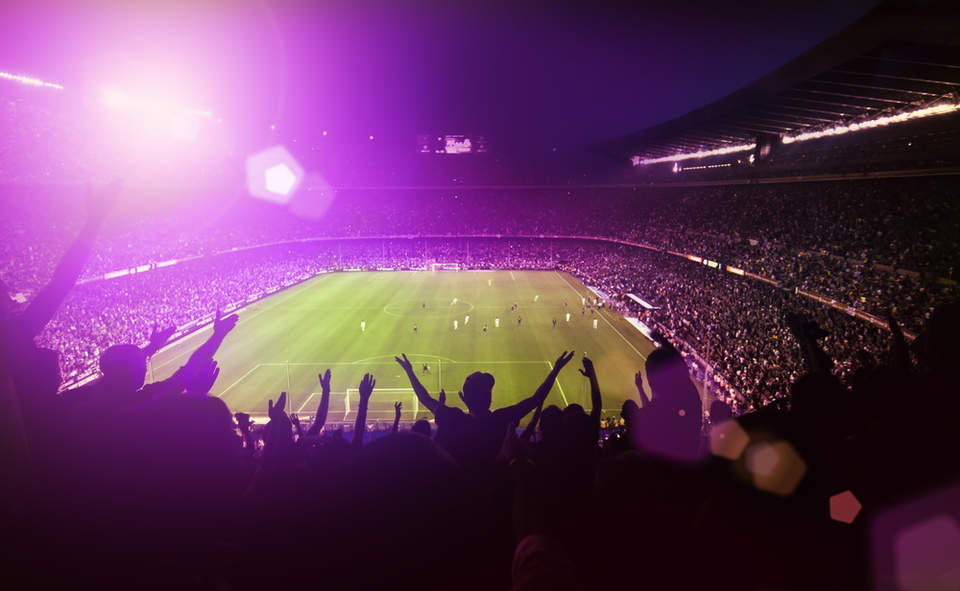
WaPo (“NLRB official says Dartmouth men’s basketball can unionize. What’s next?“):
A regional director for the National Labor Relations Board pushed college sports a bit further from amateurism Monday when she ruled the Dartmouth men’s basketball team can hold a union election — which would mean the athletes are employees of their school.
“Because Dartmouth has the right to control the work performed by the Dartmouth men’s basketball team, and the players perform that work in exchange for compensation, I find that the petitioned-for basketball players are employees within the meaning of the [National Labor Relations] Act,” Laura A. Sacks wrote in her ruling. And each word registered on college sports’ Richter scale.
The school will appeal the decision, a Dartmouth spokeswoman said in a statement Monday night, the next step in what is expected to be a lengthy process. The spokeswoman also said the school believes “these students are not employees.”
In 2015, a regional director ruled Northwestern’s football team could hold a union election, only for the NLRB to dismiss the petition and maintain the status quo. But college sports — and the conversation about whether its athletes should be employees — have evolved in the nine years since Northwestern’s case.
Since July 2021, athletes have been able to profit off their name, image and likeness (NIL) through brand deals or de facto salaries from donor-funded groups called collectives. Beyond Sacks’s decision, which followed a four-day hearing in October — after all 15 members of the Dartmouth team filed a petition in September to unionize — the NLRB is in the middle of a trial that will decide whether Southern California’s football, men’s basketball and women’s basketball players are employees of their school and the Pac-12 Conference. And then there are the many antitrust lawsuits threatening to further upend the college sports model.
“There are a couple of key things in the environment that support this effort that weren’t in place during the Northwestern push,” said Ramogi Huma, executive director of the National College Players Association. “A big one is NIL pay. When the full board decided not to assert jurisdiction in the Northwestern case, they claimed this is a system that typically needs common rules. They talked about keeping a level playing field. NIL makes it very clear that you don’t need common rules. There are different NIL payments and mechanisms from campus to campus, from state to state, across the nation. And college sports have not collapsed. I think that has been made clear.”
A date for the election hasn’t been set, though it’s expected to be in the next few weeks. But even with Dartmouth appealing, the players can hold an election. That’s where a key difference from 2015 comes into play: Unlike with Northwestern, the ballot for this election will be counted and public, meaning the NLRB would know how the players voted while deciding.
If the Dartmouth players ultimately unionize, they could gain the ability to collectively bargain with the school over compensation and other working conditions. Huma, who’s leading the efforts in the USC case, added: “As much as we celebrate NIL, that’s not changing the economic exploitation in college sports. The average athlete doesn’t get anything significant when it comes to name, image and likeness in Division I. It has to be corrected.”
This development strikes me as inevitable. While there are good competitive balance rationales for the “amateurism” model that has governed college athletics for a century and a half, there’s simply no pretending that very-high-level college football and basketball aren’t professional sports in all but name. They are, after all, multi-billion-dollar businesses in which, until very recently, everyone but the athletes themselves were cashing in.
Less than three years ago, a unanimous Supreme Court ruled that NCAA limits on compensation amounted to restraint of trade in violation of anti-trust law. A week later, the NCAA reluctantly approved “Name, Image, and Likeness” rules that, because of their toothlessness, amounted to pay-for-play and free agency that professional athletes would envy.
The unionization of athletes, combined with collective bargaining and a contract system, is not only inevitable but necessary. Right now, it’s a Wild West model with no meaningful controls or even understanding of what the basic rules of the game are.
To be sure, this ruling doesn’t get us there.
The NLRB does not have jurisdiction over public universities. That came into play in the Northwestern case because the board said Northwestern unionizing would create an uneven labor environment in the Big Ten Conference, which has a mix of private schools (such as Northwestern) and public (such as Michigan, Ohio State and Iowa). Doubling down, the board made the same case with how a majority of Football Bowl Subdivision programs are at public schools.
The Ivy League, on the other hand, is made up of eight private universities. That could, in theory, help the Dartmouth players. It also makes it fairly easy to see how an eventual win for them could scale across the conference. How it could apply to public-school athletes — or how it might affect international athletes at any university — remains unclear.
But, if the NCAA and/or the major conferences (of which we are now down to four, down from five last season and six just a few years ago) don’t voluntarily adopt an employer-employee model with the players, the courts will almost certainly force it upon them. The sweeping and unanimous nature of the 2021 Supreme Court case (NCAA v Alston) just about guarantees that.
Further, it’s simply in the long-term interest of the sport. On3’s Andy Staples:
“The presidents of the university still don’t want them to be employees. I imagine if you’re [Southeastern Conference commissioner] Greg Sankey, if you’re [Big Ten commissioner] Tony Petitti, your school presidents are telling you, ‘we still don’t want them to be employees.’ But if you are them, you are telling those school presidents, ‘we may not get that choice. So if we don’t get that choice, how do we handle this?’”
Allowing athletes to unionize would be beneficial for the way college sports is changing at the moment. With new wrinkles such as NIL and the transfer portal, things have been described as the “wild west” in their current state. A union could potentially provide solutions to those programs.
Under a union, administrators would be able to bargain with college athletes to create a salary cap much like in pro sports. It could also allow them to put limits on how often a player is able to transfer.
“Do you want a salary cap?” Staples asked. “Do you want rules that govern player movement so that they’re not free agents? Players aren’t free agents every year now, they’re free agents every week. They can go and hold schools hostage for NIL money. If you wanted a situation where they could move once every two years or once every three years, there’s a way to do that.
“The way you do that is you bargain with them. You get them to agree to it and then they can’t sue you. That’s what the NFL has. That’s what the NBA has. That’s what Major League Baseball has.”
It’s undeniable that college sports is starting to look like the pros more and more these days. Sankey and Petitti have even teamed up to create an advisory group to improve college athletics. The Big Ten and SEC are continuing to grow in power, with the conferences now containing the majority of college football powers.
It’s starting to feel not a matter of if, but when college athletes will be allowed to unionize, and this situation at Dartmouth could be what sparks change at other places. In the end, it should prove a positive thing that create more organization for the sport.
“The players have it as good as they’re ever gonna have it right now,” Staples said. “They have all the leverage in this situation. There will come a point where the schools wise up and they’ll either negotiate with them or they’ll figure out a way to make rules that will not get them sued into oblivion.
“If the players end up having a representative associate that bargains for them, I don’t think it would be a particularly strong union. I don’t think it would be as strong as the Major League Baseball or NFL or any of those unions.”
In a regulated market, the very best players have considerably less leverage than in an unregulated one. (See Major League Baseball contracts vs National Football League contracts.) But there are also far more protections and benefits for the lesser players. And, in the case of college ball, where the overwhelming number of players never see a professional paycheck—let alone make tens of millions of dollars—that’s a big thing.
The upside of contracts and CBAs for the commissioners and presidents is stability and predictability.
From a business standpoint, they know what they have to pay out in labor costs several years out. They’re much less susceptible to lawsuits. And they can enforce a single set of compensation rules for everyone.
From a sporting standpoint, we avoid a situation where the schools with the richest alumni can buy the best players. And coaches can sign and develop players without having to constantly “re-recruit” them.

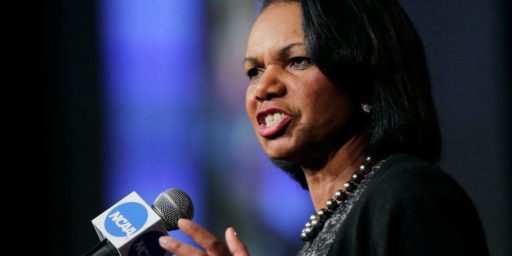

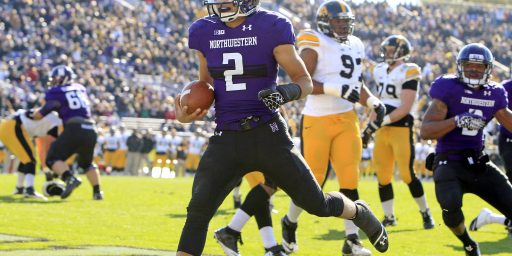
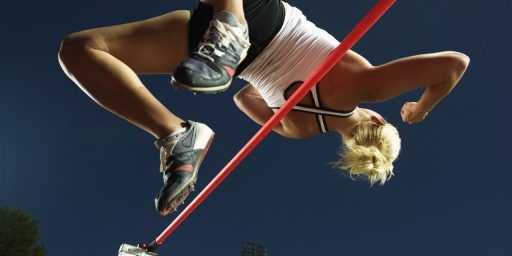
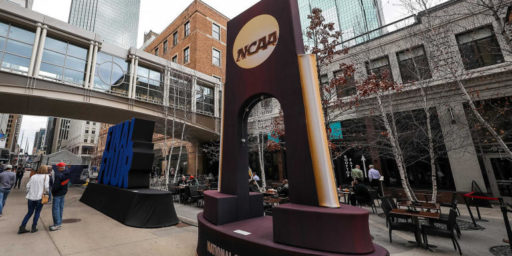
About time.
We’re the only country on the planet that uses the labof of “student-athletes” to make millions for universities, university conferences, and television networks.
In the rest of the world if a kid shows promise, he goes to an academy, where he’s PAID, some as young at 9 years old. The USA is alone is taking advantage of their young atheletes. Hell, even high school and travel ball have become cash cows for multiple organizations.
So all those fundraising letters going out to alumni are going to have to be adjusted, hmm? And if anyone is left in the country who still thinks these are “students” who just really love sports, well, that’s another illusion left in the dust. Good on the players – hopefully a first step.
Oh, and if this leads to a reduction in colleges having sports teams – good! Get back to the books and blackboards and labs.
Please release my comment from moderation. No links. No cussing. No idea why it happened.
Next on the block will be the scandals as big time gambling encroaches ever further into “college” sports. Athletes at many schools are already being paid by shady organizations that make a joke of the NIL work around. The teams themselves claim no knowledge and no involvement in these schemes, but of course it is the biggest, wealthiest and most involved supporters that are all over it. So, bottom line, you are training young men from the age of 17 or 18 that the rules are just a joke and everything is just a nod and a wink to the coach. At the same time colleges are literally allowing gambling companies to install betting parlors inside stadiums and to sponsor all kinds of athletic events. What could possibly go wrong?
@EddieInCA: Released. There was a typo in your e-mail address that led the system to interpret the comments as from a first-time poster.
@Steven L. Taylor:
The old typo in the email address trick. That’s the second time someone fell for it.
And, as businesses, there are ownership issues to resolve. For private colleges and universities, the ownership (along with requisite legal requirements, incorporation, assets and liabilities, etc.) can be normalized as a for-profit or non-profit business. For public, taxpayer supported educational institutes, I think the issue is more complicated. Especially the intermingling of taxpayer and private funds.
This is not the end of the evolution by any means.
@Scott:
Ownership will have some serious repercussions other then just pay. If the government has some level of ownership over a team and is thus responsible for their compensation, that would actually mean something as many states have unions or a “time-in” system for benefits and retirement. Pay for work is nice but the real prize might be all the extras.
Does it mean that a “student-athlete” would be considered a state employee if they attended a taxpayer supported educational institute and played? If you warm the bench at University at Buffalo as a Bull for 4 years, will that count towards the NYSLRS Tier 6 formula used to calculate benefits? What about insurance or tax breaks- there are certain riders and perks to being a state employee.
What accreditations would be needed for a sport to qualify? What SPORTS would qualify for that matter? As long as it benefits the college financially, it could be argued it’s not “amateur” or “for fun”; anything listed on the official website of the college (thus promoting it’s brand and advertised as a reason to pay them to attend) could be lumped under “potentially profit-generating” For instance, fencing has several international associations that are not hard to get get membership in since our tiny ass club is holding official tournaments that gave out internationally-recognized rankings. Hypothetically if we unionized and our affiliate school-sponsored club on campus is considered the “owners”, we’d be getting our college-aged students into the state system for retirement benefits with a nominal salary ($1 or so).
Finally, it’s time for this racket to be at least a fairer and honest racket.
The solution seems obvious to me: turn the college teams into a legitimate minor league. Each team could pay a fee to a university for the right to use their colors and logos.
@MarkedMan:
That, IMO, would be ideal.
@MarkedMan: @Andy: This creates way more problems than it solves. Right now, at least players who want one get a university degree to fall back on for the extremely likely case they don’t have a professional career. And it would be weird to tie one’s college choice to a future NFL team and vice-versa. Not to mention that there are far more universities that have football teams that potentially provide NFL players than there are NFL teams.
@James Joyner: Well, you wouldn’t really be tying yourself to a University. I wouldn’t expect the athletes to have any affiliation with it other than they are on the University’s team. If, as an athlete, you wanted to get a college education you would actually go to a college that had a healthy sports progam (i.e. not division I) or get it in the off season.
@MarkedMan: Again, even at the elite of the elite football programs—the Alabamas, Ohio States, Miamis, etc.—maybe 8-10 guys get drafted a year and most of them don’t last more than a year or two. The odds may be even worse in basketball, since NBA rosters are so small and the draft is only two rounds.
Contrary to popular belief, even elite schools graduate players. Alabama manages to do so for many players in just three years.
Elite college athletes have always received substantial emoluments that were not within the rules or even within the law. The Michigan basketball team is just one example. The NIL payments are simply open versions of what has gone on semi secretly for decades. What is new is that the old conferences and rivalries are up for bid. The NCAA is openly a profit driven organization. If you want to see real student athletes who compete for sport rather than for money, become a fan of division two women’s hockey. I personally favor the University of Delaware Blue Hens.
A few universities in Mexico own professional soccer teams. Notably the UNAM Pumas.
Their stadium is inside the campus, and accessible to the public. It also hosted the 68 Olympics, and games of the 1970 and 1986 Snooze Fests.
These play in the major league, though, not the minor ones. As far as I know, the players are not students.
@James Joyner: Yes, some college football and basketball players manage to get a legitimate college degree even at the de-facto professional Division I level. But I would contend that the baseball method is much, much better. For the cream of the crop, baseball has minor league teams that recruit from both high school and college. Their players are covered by a union, which negotiates their base salaries as well as other crucial career rules. But there are also Division I colleges with baseball teams. Almost everyone involved know that there are really only two reasons people play for them; either they can’t make the minor leagues, at least not yet, or they sincerely want a college degree. True phenoms can get a minor league offer in their junior or senior year, but that’s usually accompanied by 7 or low-8 figure signing bonuses so dropping out makes financial sense, and of course those cases are very much an exception.
Because those involved, including the players and their families, know they are probably not going to the make it to the minors, much less the majors, practice and travel schedules are reasonable and compatible with, you know, getting a real college degree.
@MarkedMan: But the minor league system has been pretty broken for a long time. The union won some great concessions for players this year, but they’ve been regularly expected to maintain a residence in a usually remote town and provide their own food while playing on the road half the season, for a piddly salary of something like $40k/year. Average minor league salaries are barebones livable, and – as with college – not that many players actually move up to the Majors. It’s a lot of guys with big dreams riding a bus around and playing ball while barely scraping by.
Just to add a wrinkle to the “at least college players get a degree!” argument: Most of the players are not on scholarships, they’re there on their own dime. That is, they’re attending the college while playing football, not the other way around. So yeah, they better be getting a college degree, but that’s wholly orthogonal to the sports question. They’re “representing” their school and getting access to, e.g., improved facilities and health care over other students, but they’re still going into debt to get that degree.
I think it would be great if these teams set up as minor league shops, where colleges can pay to get their names attached (like stadium deals), partly by allowing players to attend for 2 years per year played at steep discounts, no expiration date. I mean, imagine the boost U of M would get by having Charles Woodson roll up to get an econ degree at age 40 after a long and successful career. Talk about building brand loyalty!
@MarkedMan:
In fact, baseball’s practice and travel schedules are INSANE compared to football. The latter has 12 regular season games, all in the fall semesters, mostly on Saturdays. Only 6 of those—and sometimes as few as 4—are travel games. Baseball plays a 56-game regular season! It’s worse in basketball, whose season stretches across the fall and spring semesters.